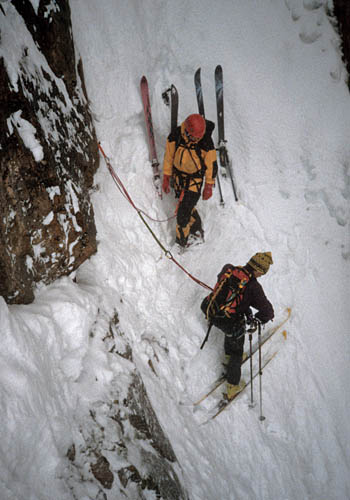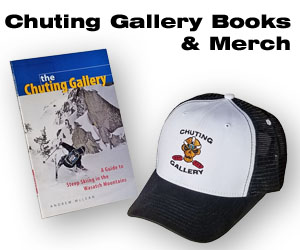What Makes a Good Partner – Part I
Great partnerships often occur between unlikely people or under unlikely circumstances. Ultimately, a solid partnership has more to do with being compatible and less to do with physical prowess. Skiing ability alone is not an indicator of a solid partner, as ski mountaineering requires such a wide array of knowledge that even a mediocre skier can often make a great partner if they compensate with other expertise. The best ways to find good partners are to ski with a variety of people and keep an open mind. The reality of skiing relationships is that you spend 90% of your time discussing anything but skiing, but when it gets down to business, you want a clear understanding between yourselves. Being on the same wavelength and communicating effectively improves your safety and enjoyment in the mountains.
A good partner should be motivational and fun to be around. While skiing gets most of the credit, it is people who enhance the mountains for us and make trips memorable. A good partner will have goals, ambitions and levels of commitment similar to your own.

Although it might never be articulated, good teamwork is the foundation of a solid partnership. Having complementary skills and interests allows each person to focus on what he or she does best and rely on the other for those things that they do not.
Mutual respect is also an essential part of strong partnerships. You should be willing to do anything that you’d ask a partner to do. Nothing undermines the basic elements of trust like asking someone to cross an avalanche path or ski an icy slope that you would not.
Partnerships created on an informal basis can turn deadly serious within the first hour of the first tour. Before going out, there is usually no discussion of risk tolerance, safety procedures or travel protocol–you just meet someone, strike up a conversation and go skiing. How can you gauge each other’s experience in a short amount of time?
Heavily used equipment is a good indicator, or asking about past skiing experiences and future skiing plans can reveal a person’s history and ambitions. How someone approaches skiing is another indicator. If they start the day with a battle cry of “Greetings from the Land of White Death!” you can assume they have a high tolerance for risk. Conversely, if they are wearing every piece of safety equipment made, they probably have a low tolerance for risk.
Tomorrow – What Makes a Good Partner – Part II
________________________
15% off partner locating Pieps DSP Beacons, at Backcountry.com
Category: 04 Partners









